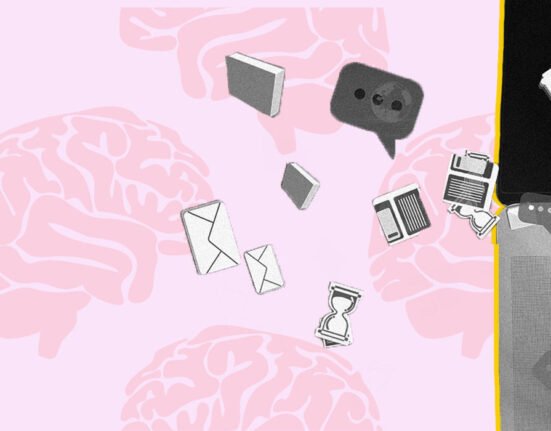Human brains are like machines, which help us to make meaning out of every single thing. Our brains started to interpret any random events or elements with some patterns, stories or connections even if there are no such things. The reasons behind these are rooted in psychology and in cognitive sciences.
Why does Our Brain Need Meaning in Random Events?
1. Pattern recognition as a survival kit
Our ancestors used these patterns as survival kits to protect themselves from animal tracks or detect seasonal changes. These traits developed into powerful instincts that helped them find order in chaos. Pattern recognition helps us see connections even today.
2. Cognitive Bias Leads to Belief
We already talked about how our brain likes order in randomness. So, we create structures and narratives in everything because it helps us to feel emotionally satisfied. There are some well-known cognitive biases:
- Apophenia: It is a tendency where we perceive connections and patterns in meaningless data.
- Pareidolia: Almost everyone experiences this in their lifetime. Pareidolia is seeing familiar shapes or faces in clouds, toast or abstract images. Do you also experience this?
- Confirmation Bias: The events that support our beliefs or reinforce some perceived patterns are noticed or remembered by us.
Read More: Cognitive Biases That Secretly Control Your Decisions – And How to Outsmart Them
3. Gestalt Psychology
The whole is greater than the sum of its parts. The Gestalt school of psychology is based on the principle that The Whole is greater than the sum of its parts. This idea helps us to understand why we prefer meaning in uncertain things.
Read More: Gestalt Psychology’s Influence on How We See the World
4. The Figure Ground Principle
This helps us to differentiate between the figure, which is the focus and the ground or the background. So, in random things, we focus on the figure and ignore the whole background. For example, in this picture, you can see a vase and your brother can see two human faces. You both are correct because you focused on the vase and ignored the human faces, so it worked as a background for your vase.
5. Law of Simplicity
It also talks about how we always try to interpret, simplify and organise the ambiguous stimuli.
6. Law of Similarity and Proximity
When similar events occur close together, it is seen as relatable. That’s why when we see the person just after dreaming about them, it’s treated as meaningful.
7. Closure and Continuity
When we see a dotted circle, we perceive it as a circle because we fill the gaps mentally and complete the pattern. It helps us to make explanations for the coincidences, though no links exist.
What is Coincidence, And Is It Related to Synchronicity?
Coincidence is just about a random arrangement of events, and Synchronicity is the meaningful coincidence that has logic and probability. People perceive Synchronicity as a sign that comes from the universe or divine power.
1. Neuroscience of Coincidence
Some studies are about the sensory basis for how we perceive these connections between the coincidences. The studies that use EEG reveal that if we frequently experience synchronicity, our alpha brainwave activity increases when our eyes are closed. So, it stands as proof that coincidence is not only psychological but also neurological.
Does Emotional State Influence Perception?
Negative emotions make us believe that everything happens for a reason. It is soothing for us to find meaning in randomness. We also believe in superstitions when we can’t control the outcome, and it gives us emotional comfort. People who perceive more positive emotions have flexible thinking styles, which are linked with creativity.
Read More: What Effects Could Superstition Have on Our Psychological Well-Being?
Does Creativity Relate to Imagination?
People who are more creative and open-minded can imagine more meaning in randomness. That’s why from the unexpected proximity, artists and writers can produce new imagination.
What do You Know about Schizotypy?
Schizotypal thinking is associated with excessive pattern seeking. It is a trait that is linked to unusual beliefs and perceptions. In this type of case, the person’s imagination blurs out with delusion.
Let’s do a Fun Experiment
Do you also experience these ‘Meaningful’ coincidences?
- Do you ever think about someone, and just after that, they call you?
- Do you see the repetitive numbers like 11:11 and think about it as a good sign of the universe?
- Do you meet someone and realise that you both have the same name?
- Do you dream about some event, and later that same thing happens to you?
- Do you meet with someone who has the same birthday as you?
Test yourself and share it with your friends to know how often you experience these meaningful coincidences and compare it with others. Just for information, it’s not a psychological test. These are some real-life experiences of meaningful coincidences.
Conclusion
We make meaning out of any random things because, with the help of this, we feel connected, purposeful and safe. It is not a new concept; it comes from our ancestors. The reason behind these psychological beliefs is cognitive bias. The Gestalt school of psychology, which has the idea that ‘the whole is greater than some of its parts’, helps us to explain the meaning of random events and why we perceive these. Our emotional state and creative mind are sometimes responsible for our perception of meaningful coincidence. Lastly, we have to balance the wonder with a reason, and we need to embrace the mystery without losing sight of reality.
References +
Brugger, P. (2001). From haunted brain to haunted science: A cognitive neuroscience view of paranormal and pseudoscientific thought. In S. J. Lynn, J. W. Rhue, & I. Kirsch (Eds.), Science and pseudoscience in clinical psychology (pp. 195–242). Guilford Press.
Bustamante, N. (2023). What is Gestalt Psychology: Theory & Principles? Simply Psychology. Retrieved from https://www.simplypsychology.org/what-is-gestalt-psychology.html
Vyse, S. A. (2013). Believing in magic: The psychology of superstition (Updated ed.). Oxford University Press.
Cherry, K. (2024). Gestalt psychology. Verywell Mind. Retrieved from https://www.verywellmind.com/what-is-gestalt-psychology-2795808
Gervais, W. M., & Norenzayan, A. (2012). Analytic thinking promotes religious disbelief. Science, 336(6080), 493–496. https://doi.org/10.1126/science.1215647
Jung, C. G. (1973). Synchronicity: An acausal connecting principle. Princeton University Press.
Kahneman, D. (2011). Thinking, fast and slow. Farrar, Straus and Giroux.
Practical Psychology. (2023). 7 Gestalt Principles (Definition + Examples). Retrieved from https://practicalpie.com/gestalt-principles/
Risen, J. L. (2016). Believing what we do not believe: Acquiescence to superstitious beliefs and other powerful intuitions. Psychological Review, 123(2), 182–206. https://doi.org/10.1037/rev0000017
Shermer, M. (2011). The believing brain: From ghosts and gods to politics and conspiracies—How we construct beliefs and reinforce them as truths. Times Books.













Leave feedback about this